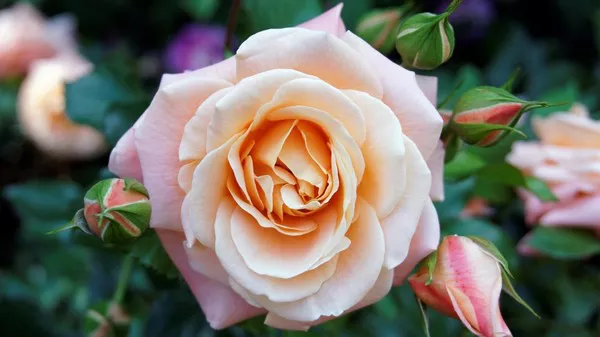Roses are cherished for their beauty, but gardeners often find themselves in battle against a common foe: grasshoppers. These voracious insects can quickly decimate rose plants if left unchecked. Fortunately, there are several effective strategies for controlling grasshopper populations and protecting your roses. In this article, we’ll explore various methods for dealing with grasshoppers, from natural deterrents to chemical solutions.
Understanding Grasshopper Behavior
Before delving into control methods, it’s essential to understand the behavior and lifecycle of grasshoppers. Grasshoppers are herbivorous insects belonging to the order Orthoptera. They undergo incomplete metamorphosis, meaning they hatch from eggs as miniature versions of adults, known as nymphs, and gradually grow larger through a series of molts until reaching adulthood.
Grasshoppers are attracted to a wide range of plants, including roses, due to their tender foliage and succulent stems. They feed by chewing on leaves and can cause significant damage, especially when present in large numbers. Adult grasshoppers are most active during warm, sunny days and can leap considerable distances to reach new feeding sites.
Identifying Grasshopper Damage on Roses
Recognizing the signs of grasshopper damage is crucial for early intervention. Common indicators of grasshopper feeding include:
1. Irregularly shaped holes in leaves: Grasshoppers typically consume foliage by chewing irregular holes, leaving behind ragged edges.
2. Skeletonized leaves: In severe infestations, grasshoppers may devour entire leaves, leaving only the veins intact.
3. Stem damage: Grasshoppers may also feed on the tender stems of rose plants, causing them to wilt or dieback.
4. Presence of grasshoppers: Keep an eye out for adult grasshoppers or their smaller nymphs on or around rose bushes.
Early detection of grasshopper activity allows for prompt action to prevent further damage to rose plants.
Natural Control Methods
1. Habitat Modification: Altering the landscape around your rose garden can make it less hospitable to grasshoppers. Keep grass trimmed short and remove tall weeds and other vegetation that may serve as breeding or hiding spots for grasshoppers.
2. Beneficial Predators: Encourage natural predators of grasshoppers, such as birds, to frequent your garden by providing bird feeders, bird baths, and nesting sites. Additionally, predatory insects like praying mantises and assassin bugs can help keep grasshopper populations in check.
3. Row Covers: Use lightweight row covers or floating row covers to physically block grasshoppers from accessing your roses. Be sure to secure the covers tightly to prevent grasshoppers from slipping underneath.
4. Diatomaceous Earth: Sprinkle food-grade diatomaceous earth around the base of rose plants. This powdery substance contains microscopic sharp edges that pierce the exoskeleton of insects, including grasshoppers, causing them to dehydrate and die.
Cultural Practices
1. Companion Planting: Intercropping roses with aromatic herbs such as basil, mint, or rosemary may help deter grasshoppers. These strong-smelling plants can mask the scent of roses, making them less attractive to grasshoppers.
2. Mulching: Apply a layer of organic mulch, such as wood chips or straw, around the base of rose plants. Mulch helps retain soil moisture and suppress weeds while creating a barrier that may deter grasshoppers from laying eggs in the soil.
3. Regular Maintenance: Keep your rose garden tidy by removing spent blooms, fallen leaves, and other plant debris. This reduces hiding places for grasshoppers and prevents the buildup of populations.
Chemical Control Options
1. Insecticidal Soap: Spray rose plants with insecticidal soap, a low-toxicity pesticide that suffocates soft-bodied insects like grasshoppers on contact. Be sure to follow the manufacturer’s instructions regarding application frequency and safety precautions.
2. Neem Oil: Neem oil, derived from the seeds of the neem tree, acts as a natural insecticide and repellent. Dilute neem oil according to the instructions on the label and spray it on rose foliage to deter grasshoppers and other pests.
3. Pyrethrin-based Insecticides: Pyrethrin-based insecticides, derived from chrysanthemum flowers, are effective against grasshoppers and other garden pests. These products have a relatively low environmental impact but should be used with caution, as they can harm beneficial insects.
4. Chemical Baits: In areas with severe grasshopper infestations, chemical baits containing toxic ingredients may be necessary for effective control. Follow the instructions carefully and apply baits according to label recommendations to minimize non-target impacts.
Integrated Pest Management (IPM) Approach
For sustainable and environmentally responsible grasshopper control, consider adopting an Integrated Pest Management (IPM) approach. IPM combines multiple control tactics, including cultural, biological, and chemical methods, to manage pest populations while minimizing risks to human health and the environment. By implementing a holistic approach to pest management, gardeners can achieve long-term success in controlling grasshoppers on roses and other ornamental plants.
Conclusion
Grasshoppers pose a significant threat to rose plants, but with careful planning and proactive management, their impact can be minimized. By implementing a combination of natural control methods, cultural practices, and, when necessary, targeted chemical interventions, gardeners can protect their roses from grasshopper damage while promoting a healthy and thriving garden ecosystem. Remember to monitor your rose garden regularly for signs of grasshopper activity and adjust your control strategies as needed to maintain optimal plant health and beauty.


